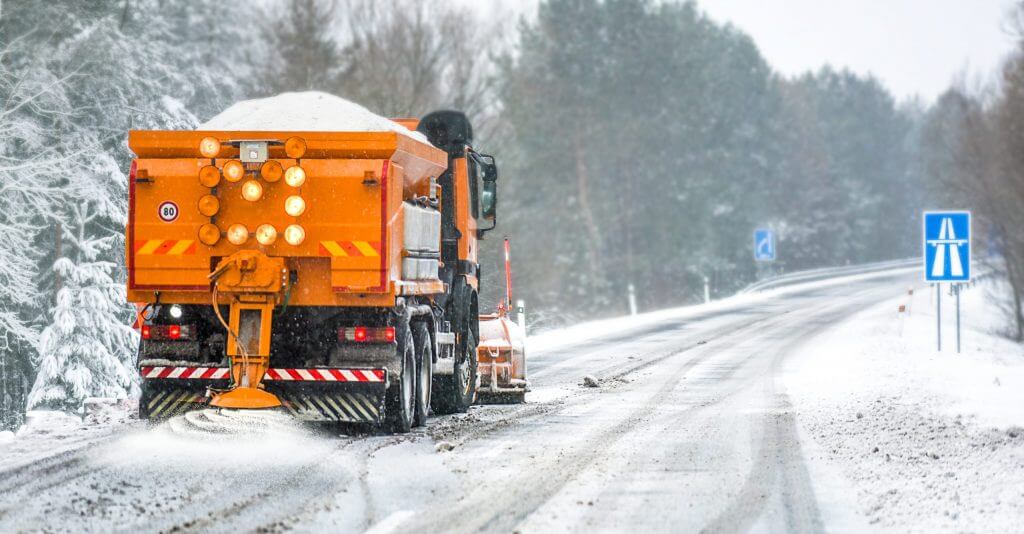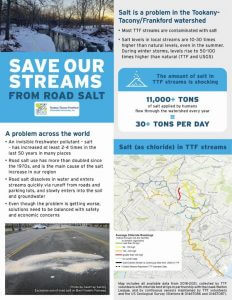Road Salt Monitoring
Road salt is commonly used to de-ice roads in the winter to improve travel safety. Unfortunately, salt easily washes off with snowmelt or rain into streams and rivers. The salt content in soil and waterways builds up as we continue to apply salt to roads. Salt content in waterways negatively impacts the health of fish, macroinvertebrates, and other aquatic life. The main ingredients in road salt are chloride and sodium. Chloride can disrupt normal physiological processes in aquatic organisms. High sodium levels can contaminate drinking water which can affect people with high blood pressure.
State, local, and private users of road salt can follow recommended best management practices to reduce the amount of salt they use and limit runoff.
Existing Tools & Resources
There are many fantastic resources available related to observing road salt practices and learning how to take action to improve best practices and reduce run-off into streams and rivers.
- Izaak Walton League’s Winter Salt Watch Resources
- Smart Salting Assessment Tool, Minnesota Pollution Control Board
- Winter Road Maintenance Best Practices for Water Quality Protection, Lake George Association

Action Steps
Education, Observation, and Reporting
- Share the “What You Can Do” page from IWLA with volunteers/members of your organization.
- Out and about: Note location of salt piles on roadways or stockpiles of salt. How large is the pile? Is it uncovered? Is it contained? Is it near a storm drain?
- Record chloride levels of local waterways if you’re able to access test kits with proper measurement tools.
- Local: Contact your city or county to report concerning chloride levels or large salt piles. Share resources on best practices with your community so neighbors and businesses reduce their salt use in the winter (via letters to the editor, neighborhood association meetings, town hall meetings, and other gathering spaces).
- State: Reach out to the Department of Transportation to express your concern and suggest that they apply less salt and implement best practices for reducing salt runoff.
- Use Izaak Walton League of America’s sample letters to write to state legislators
Contact Info for State Departments of Transportation
How the Network Is Monitoring Salt Use
The Stroud Water Research Center trains volunteers in the Delaware River Basin to monitor water quality using EnviroDIY monitoring stations. The data is then shared and used on the online tool Monitor My Watershed.
Tookany/Takony-Frankford Watershed Partnership (TTF) participates in monitoring efforts and developed a Road Salt Factsheet for the public. They’ve also held trainings in partnership with other organizations to teach people how to track road salt in waterways by participating in the Winter Salt Watch with the Izaak Walton League of America.
Read about how TTF Streamkeeper volunteer Dave Bell used the Winter Salt Watch program to alert his local officials of elevated chloride levels and how he is keeping them accountable.





